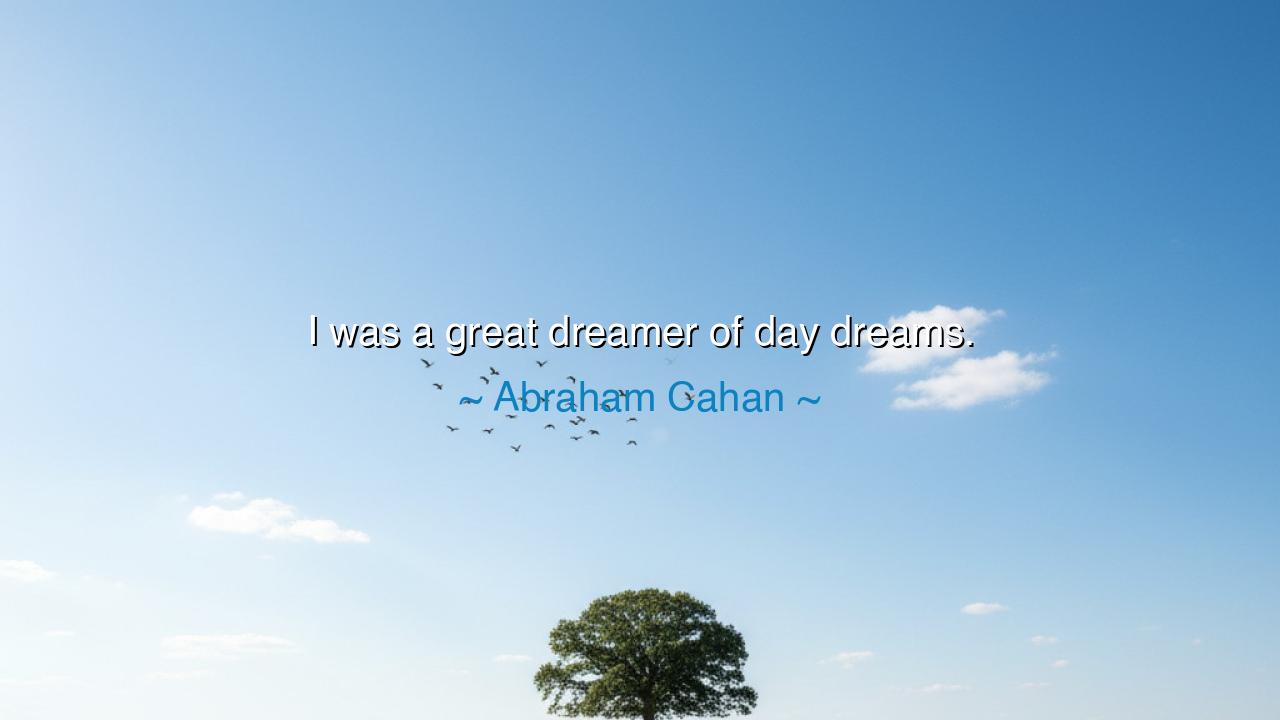
I was a great dreamer of day dreams.






In the quiet language of longing and imagination, Abraham Cahan once confessed: “I was a great dreamer of day dreams.” These words, humble and wistful, rise from the heart of a man who had known hardship and exile — a writer, editor, and immigrant who carried the fire of two worlds within him. Yet behind their simplicity lies a truth eternal and profound: that dreaming, even while awake, is not an escape from life, but a deeper way of living it.
Cahan, born in Lithuania and later a voice for immigrant America, spoke for the weary and the hopeful — for those who crossed oceans with empty hands but full hearts. His “day dreams” were not idle fancies; they were visions of belonging, of dignity, of freedom. He knew that before any life is transformed, it must first be imagined. The dream, though unseen, is the seed from which all reality blooms. To dream while waking is to hold faith amid uncertainty — to see the shape of what could be within the dust of what is.
The ancients, too, honored the dreamer. They believed that the gods whispered through visions, that imagination was the bridge between mortal and divine. For it is through dreams that humanity ascends beyond its circumstances. A man may be poor, chained, or forgotten — yet within the theater of his mind, he may walk among stars. The day dreamer, therefore, is not lost in illusion, but engaged in creation. He gazes not away from the world, but deeper into it, discerning possibilities invisible to the ordinary eye.
Consider the story of Thomas Edison, who as a child was told he was “too slow” to learn. Yet he spent his days lost in waking dreams — imagining lights that would not burn out, machines that would speak, worlds yet unmade. His dreams became inventions that reshaped civilization. Like Cahan, he refused to let the world’s disbelief dim his inner vision. Both men remind us that day dreaming is not weakness, but the first act of courage — the soul’s declaration that what does not yet exist can exist.
But dreaming alone is not enough. The wise know that the dream must be followed by the deed. A vision is a spark, but action is the flame. Cahan did not merely dream of justice or of art — he built it, word by word, through his novels and through the Jewish Daily Forward, giving a voice to those who had none. He turned dream into movement, imagination into impact. In this union of thought and labor, he found the alchemy of transformation — where fantasy becomes foundation, and longing becomes legacy.
The danger of modern life, my children, is not that we dream too much, but that we forget how to dream at all. In our pursuit of order, we have silenced imagination — the very force that births beauty and renewal. To live without dreaming is to live only half-awake, to wander through the world as a machine of habit. Yet the day dreamer remains alive to wonder; he sees the extraordinary in the ordinary, and the eternal in the fleeting. His heart remains young, no matter his years.
Therefore, let this be your lesson: protect your dreams, for they are the breath of your spirit. Dream not only in the night, when the body sleeps, but in the day, when the world resists you. Let your imagination be both refuge and forge — a place to heal, and a place to create. Nurture your visions with patience and work, and they will one day step forth into the sunlight of reality.
For the world belongs not to the clever nor to the strong, but to the dreamers who act. As Cahan’s words remind us, to dream by day is to live twice — once in the world that is, and once in the world that is yet to come. And blessed are those who see both, for they are the true architects of tomorrow.






AAdministratorAdministrator
Welcome, honored guests. Please leave a comment, we will respond soon